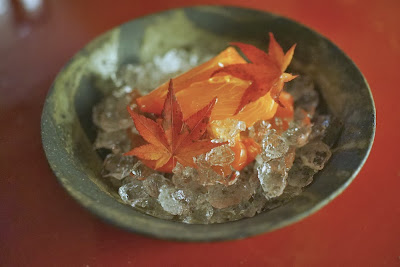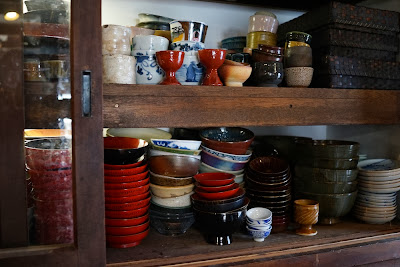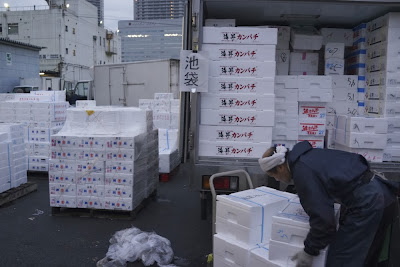Some final, overall thoughts on my trip to Japan.
What I did not mention in this blog was that I was invited there to help celebrate a big birthday for a dear friend and Chicago chef, Rick Bayless. It was a surprise so I did not tell many people of my plans to travel there. The trip had a very strong food component.
The Tokyo portion of the trip was very carefully crafted by Deann Bayless and chef, sommelier, journalist, restaurant consultant and author of Food Sake Tokyo, Karla Yukari Sakamoto, who accompanied us thru out the trip. She was FABULOUS in her knowledge, grace, and guiding abilities.
THE ESSENCE OF THE TRIP...for me, was experienced in a ryokan (guest house) in Kyoto and at the final lunch at Ginza Kyubey in Tokyo (see earlier post of my visual journey thru Wabi Sabi Japan).
There was a NYT article on the ryokan we stayed at, Japanese Traditions Ancient Kyoto. The moment I walked in I felt a calm state of peace and harmony wash over me. EVERYTHING from that experience was like a perfectly orchestrated ballet. I took a few photographs from the kaiseki dinner and other meals that were served in the room. Every course was exquisite in its presentation and tastiness. Many "firsts" were had at the dining table.
the most delicious sukiyaki EVER!
" If you don't speak the language of the country you are visiting, a good way to access its culture is thru the food and the music." Rick Bayless
Melons sell for hundreds of dollars...the entire plant is sacrificed for the one promising melon which is nurtured over many months...the skin of these melons is unlike anything I have ever seen in the states.
We experienced traditional Japanese meals, including .......
A Yakitori dinner, a Tempura lunch, Unagi lunch, a Tonkatsu dinner, Kaiseki dinner (please purchase Yukari's book for more information, like what the 5 elements are of EVERY MEAL).
Unagi lunch
Unagi (Anguilla japonica) is freshwater eel and a traditional cuisine of Tokyo. It is butterflied, steamed, and then grilled over charcoal and served over a bed of rice.
Soba Dinner
The soba master at Nigyō is highly respected for his handmade soba noodles.
barrels of miso being cured in her backyard....
vinegar tasting
wasabi being prepared for the salmon roe dish
Ginza Kyubey
the city’s celebrated sushi restaurant that exemplified the Japanese aesthetic in every detail of the experience
The decor was drop dead beautiful, exquisite sushi, service...all 5 senses were covered.
This meal / experience was not just spectacular, it was heavenly.
I just finished watching several episodes of The Mind of the Chef, with David Chang traveling to Japan to learn more about food. The following quote sums up the experience for all visitors, not just chefs.... "It's impossible for any cook, any chef to visit Japan, be exposed to the impossibly fetishistic appreciation of the ingredients, the perfectionist approach to technique, the mind boggling sheer volume of good stuff to eat, without being changed forever---- You leave Japan a better cook or you give up cooking altogether. Japan tends to focus the mind in wonderful new ways, refining, stripping away what is unnecessary."





























































